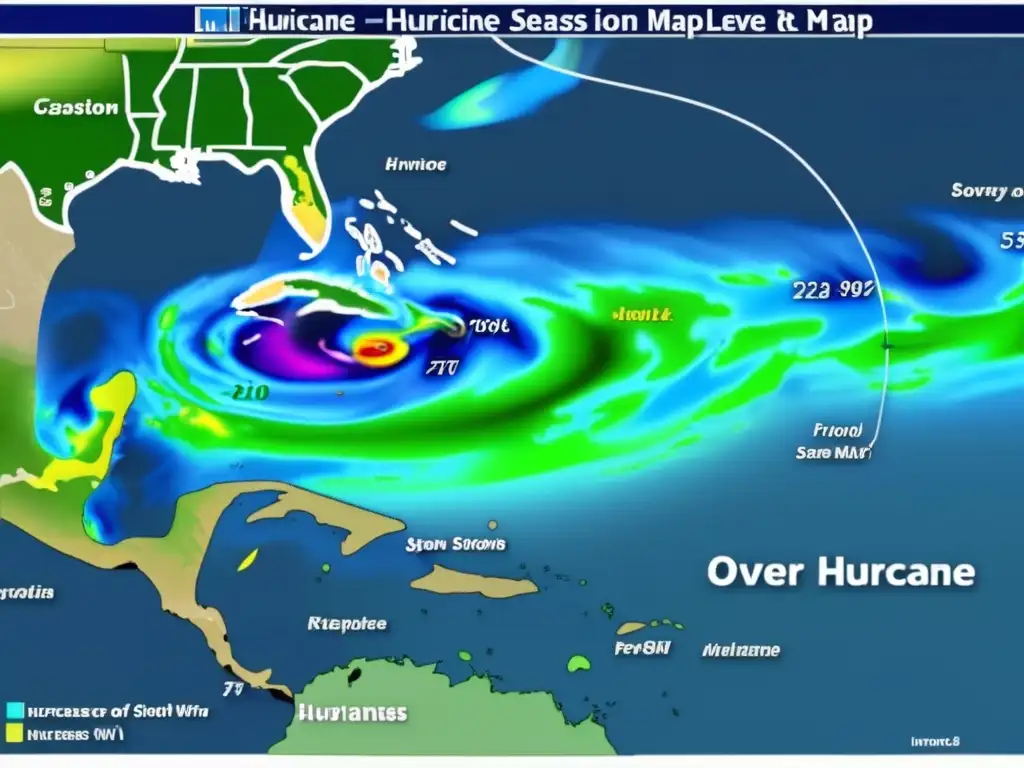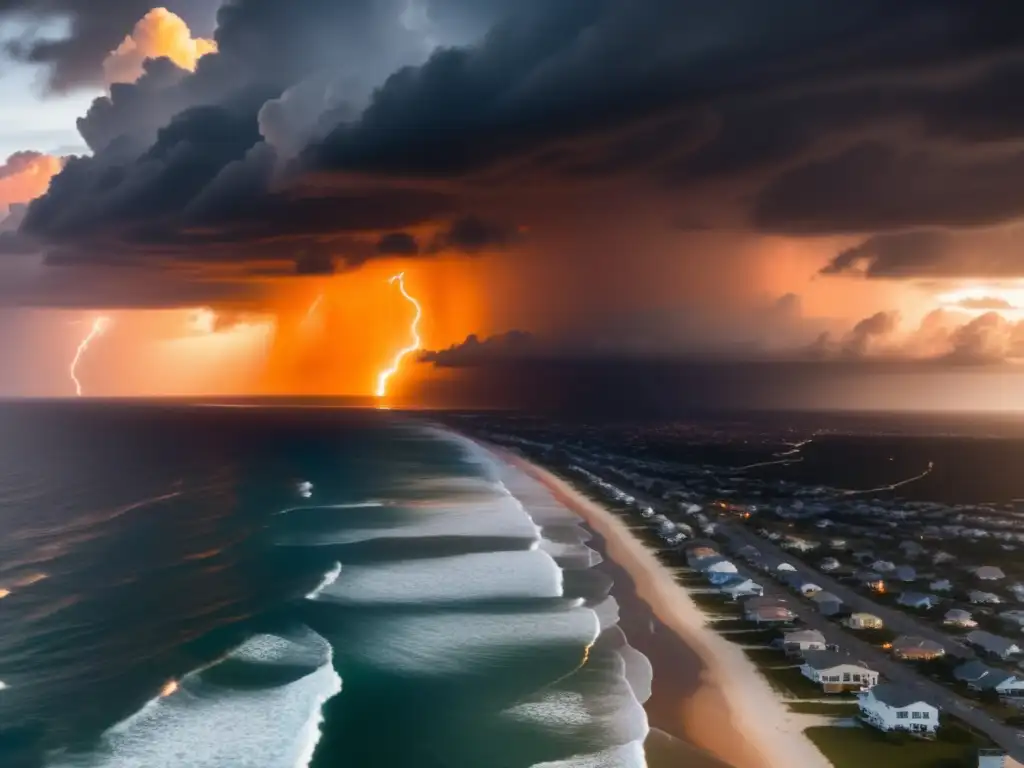The Most Active Hurricane Seasons On Record

The Most Active Hurricane Seasons on Record
Introduction
As hurricanes are one of the most destructive natural disasters that can hit an area, it's essential to have basic knowledge about their impact and occurrence. The Atlantic hurricane season runs from June 1st to November 30th each year, and during this time, we can experience several hurricanes of varying intensity. However, some years prove to be more active than others. In this article, we'll take a closer look at the most active hurricane seasons on record, what caused them, and what we can learn from them.
The Most Active Hurricane Seasons on Record

1950
The 1950 hurricane season is considered to be one of the most active hurricane seasons on record. It had 14 named storms, ten hurricanes, and six major hurricanes, with two of the major storms hitting the United States. Hurricane Easy caused significant damage in North Carolina, and Hurricane King caused flooding in Florida and Georgia. The season was so active that the National Hurricane Center ran out of names, and they had to start using the NATO phonetic alphabet. The reason for this level of activity is believed to be due to above-average sea surface temperatures in the Atlantic.
2005
In 2005, we had another record-breaking hurricane season, with 27 named storms, 15 hurricanes, and seven major hurricanes, causing widespread damage across the Gulf Coast and Caribbean islands. The most notable hurricane of the season was Hurricane Katrina, which killed over 1,800 people and left billions of dollars in damages. This season was fueled by changes in atmospheric patterns, including the presence of La Niña-like conditions in the Pacific Ocean and above-average sea surface temperatures in the Atlantic.
2017
The 2017 hurricane season was also one of the most active on record, with 17 named storms, ten hurricanes, and six major hurricanes. Hurricane Harvey, which hit Texas, was the most significant storm of the season. It caused widespread flooding and damage, killing 107 people and causing $125 billion in damages. Similar to the 2005 season, the 2017 season's high activity was due to warmer than average sea surface temperatures and weak vertical wind shear.
Factors Contributing to Active Hurricane Seasons

Sea Surface Temperatures
One of the primary factors contributing to more active hurricane seasons is warmer than usual sea surface temperatures. Hurricanes draw strength from warm, moist air, so when the ocean surface temperature is higher than average, more water evaporates into the atmosphere, creating an environment that's more conducive to hurricane formation. Studies have shown that there has been a gradual increase in sea surface temperatures over the past century, which may be responsible for the increase in hurricane intensity and frequency.
Atmospheric Conditions
Another critical factor affecting hurricane activity is atmospheric conditions, including the presence of La Niña or El Niño events. La Niña is associated with cooler than normal water temperatures in the eastern Pacific, leading to warmer than normal sea surface temperatures in the Atlantic, which can fuel more hurricane activity. On the other hand, El Niño is associated with warmer than normal water temperatures in the eastern Pacific, which increases wind shear and can suppress hurricane formation.
Aerosols
Research has suggested that aerosols from human activities such as smog, industrial pollution, and biomass burning could have an impact on hurricane activity. Aerosols can alter the way clouds form, which affects the amount of heat and moisture in the atmosphere. This can ultimately affect hurricane intensity and frequency.
Frequently Asked Questions

-
What is the most active hurricane season on record?
The 2005 hurricane season is currently the most active recorded with 27 named storms, 15 hurricanes, and seven major hurricanes.
-
What causes more active hurricane seasons?
Warmer than usual sea surface temperatures, atmospheric conditions such as La Niña, and aerosols from human activities can contribute to more active hurricane seasons.
-
Are hurricane seasons becoming more active over time?
Studies show that there has been a gradual increase in hurricane intensity and frequency over the past century, possibly due to increased sea surface temperatures.
-
What can be done to prepare for an active hurricane season?
Having an emergency plan, stocking up on supplies, and staying informed with local weather updates can help prepare for an active hurricane season.
-
Is climate change responsible for more active hurricane seasons?
While climate change is not directly responsible for hurricane formation, it may be contributing to more frequent and intense hurricanes due to warmer sea surface temperatures caused by human activities such as greenhouse gas emissions.
Conclusion
It's essential to have basic knowledge about hurricanes and their occurrence, especially if you live in a hurricane-prone area. The most active hurricane seasons on record have caused significant damage, and we can learn from them to better prepare for future storms. While the cause of more active hurricane seasons is multifaceted, warmer sea surface temperatures, atmospheric conditions, and aerosols from human activities all contribute to more frequent and intense hurricanes. As citizens, we can take steps to prepare for an active hurricane season by having an emergency plan in place, stocking up on supplies, and staying informed with local weather updates.
Following basic hurricane safety guidelines can help save lives, prevent damage, and ensure a quicker recovery after the storm has passed. Remember to stay safe and be prepared.
Additional Resources

 Examining The Costliest Hurricanes In History
Examining The Costliest Hurricanes In History Storm Chasers: Tracking Hurricanes For Science
Storm Chasers: Tracking Hurricanes For Science Tales From The Eye: Survivor Stories From Major Hurricanes
Tales From The Eye: Survivor Stories From Major HurricanesIf you want to discover more articles similar to The Most Active Hurricane Seasons On Record, you can visit the Basic knowledge about hurricanes: category.
Leave a Reply

Articulos relacionados: